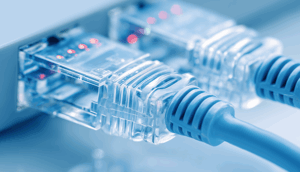In the ever-evolving landscape of industrial automation and medical technology, reliable and high-performance data communication is paramount. Industrial data communication cables serve as the critical nervous system, enabling seamless data transfer between various components, control systems, and monitoring devices. These cables are engineered to withstand harsh environmental conditions, electromagnetic interference (EMI), and mechanical stress, ensuring uninterrupted operation in demanding settings. Their robust design and advanced materials contribute to minimizing signal degradation and maximizing data integrity, which are essential for real-time control, precise monitoring, and efficient data analysis.

The selection of appropriate industrial data communication cables hinges on several factors, including the specific application requirements, data transmission rates, environmental conditions, and regulatory standards. Various cable types are available, each with its unique strengths and limitations. Twisted pair cables, known for their excellent noise immunity, are commonly used for Ethernet and serial communication. Coaxial cables offer higher bandwidth and are suitable for transmitting video signals and high-frequency data. Fiber optic cables provide superior bandwidth and immunity to EMI, making them ideal for long-distance communication and electrically noisy environments. Understanding the nuances of each cable type is crucial for selecting the optimal solution that meets the application’s specific needs.

The performance of industrial data communication cables is significantly influenced by the quality of their construction and the materials used. High-quality conductors, such as copper or silver-plated copper, ensure low signal attenuation and efficient data transmission. Insulation materials, such as polyethylene (PE) or fluoropolymers, provide excellent electrical insulation and resistance to environmental factors. Shielding, typically made of braided copper or aluminum foil, minimizes EMI and protects the signal from external interference. The cable jacket, usually made of PVC or polyurethane, provides mechanical protection and resistance to abrasion, chemicals, and extreme temperatures. Choosing cables with superior materials and construction ensures long-term reliability and optimal performance.
Beyond the fundamental cable characteristics, advanced features like Power over Ethernet (PoE) capabilities are gaining prominence. PoE allows for simultaneous data transmission and power delivery over a single cable, simplifying installation and reducing cabling costs. This is particularly advantageous in applications where remote devices, such as cameras, sensors, and wireless access points, require both data connectivity and power. Furthermore, advancements in cable design have led to the development of cables with enhanced flexibility, allowing for easier routing and installation in tight spaces. These flexible cables are particularly useful in robotic applications and other dynamic environments where the cable is subjected to constant movement and bending.
In conclusion, industrial data communication cables are indispensable components in modern industrial and medical systems. Their ability to transmit data reliably and efficiently is critical for ensuring the smooth operation of various processes and applications. By understanding the different cable types, materials, and features, engineers and technicians can select the optimal solution for their specific needs, maximizing performance and minimizing downtime. As technology continues to evolve, industrial data communication cables will continue to play a crucial role in enabling seamless connectivity and driving innovation across diverse industries.